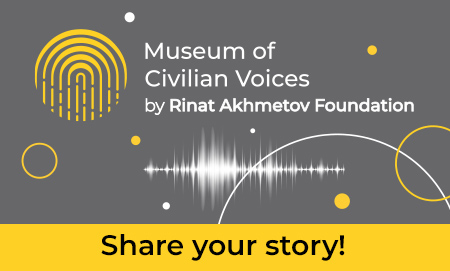750,000 people receive humanitarian aid in Donbas

27% residents of Donetsk region personally receive humanitarian aid. This is confirmed by the results of sociological survey conducted by Kyiv International Institute of Sociology (KIIS) in May and June 2016 and commissioned by Rinat Akhmetov Humanitarian Center. In absolute terms, this is more than 750,000 people.
"According to the survey, 27% of residents in Donetsk region personally receive humanitarian aid. More than 75% of this aid is coming from Rinat Akhmetov Humanitarian Center", ‒ General Director of KIIS Volodymyr Paniotto said during the roundtable meeting hosted in Kyiv on July 6.
Besides, according to the survey, the population also receives humanitarian aid from the International Committee of the Red Cross, the United Nations, People in Need (Czech humanitarian organization) and other international organizations.
"In absolute terms, humanitarian aid in Donetsk region is received by more than 750,000 people older than 18. The large-scale humanitarian support of the region allowed to avoid a humanitarian catastrophe", ‒ Rimma Fil, the Humanitarian Center's Coordinator, announced.
Rinat Akhmetov Humanitarian Center delivers food on both sides of the contact line and issues to the most vulnerable categories of population: retired people older than 60, disabled people, families with many children. They make 85% of all food package recipients. According to KIIS research retired people older than 60 are the most distressed category.
"Over the entire period of its operation the Center delivered more than 100,000 tons of food and issued 8.7 million survival kits on both sides of the contact line. After two years since the outbreak of the conflict, humanitarian aid remains the only source of livelihood for many elderly people and vulnerable categories of Donbas population", - Rimma Fil said.
KIIS social research called "Humanitarian Map 2.0. The map of expectations and moods" was conducted from May 29 till June 12, 2016. 2,110 respondents older than 18 were surveyed in 100 settlements of Donetsk region, both in government-controlled and non-government-controlled areas, through telephone and computer interviewing (CATI) via landline and cell phones.
.jpg?content_type=image%2Fjpeg&disposition=inline%3B+filename%3D%22photo5332632614940553424+%25281%2529.jpg%22%3B+filename%2A%3DUTF-8%27%27photo5332632614940553424%2520%25281%2529.jpg)



